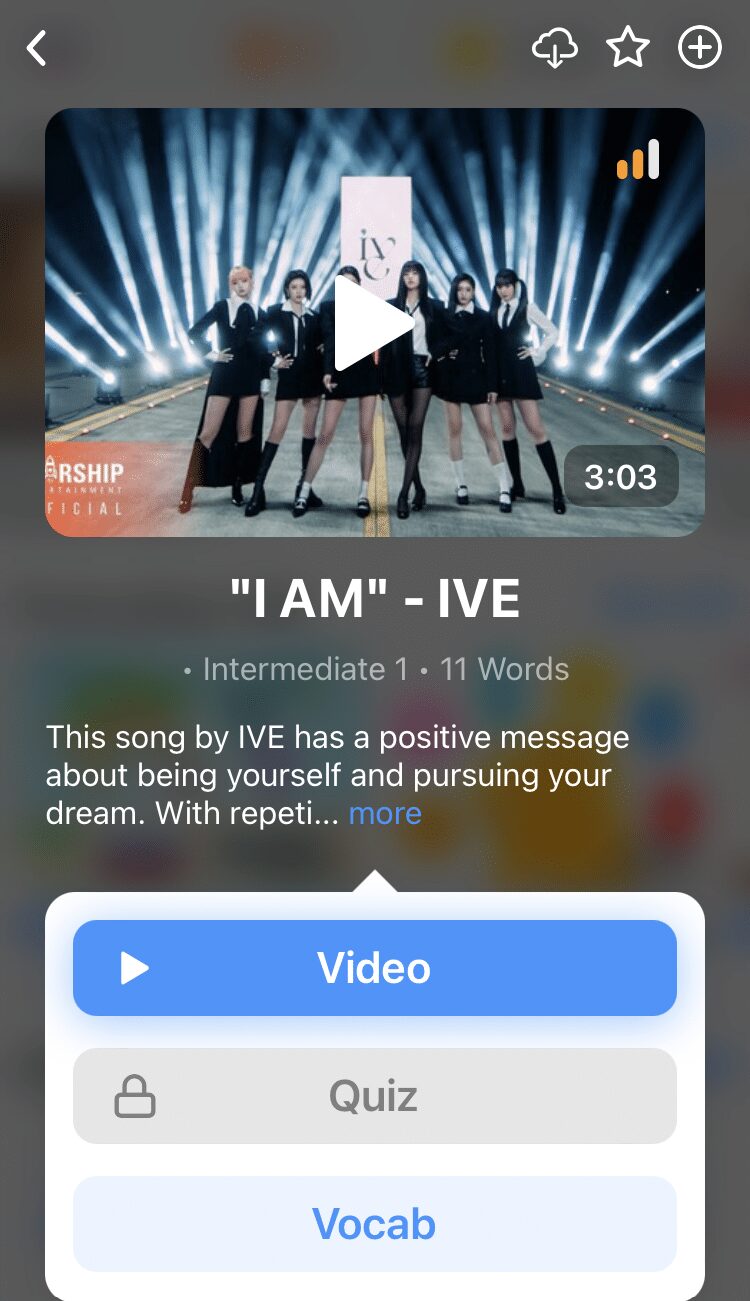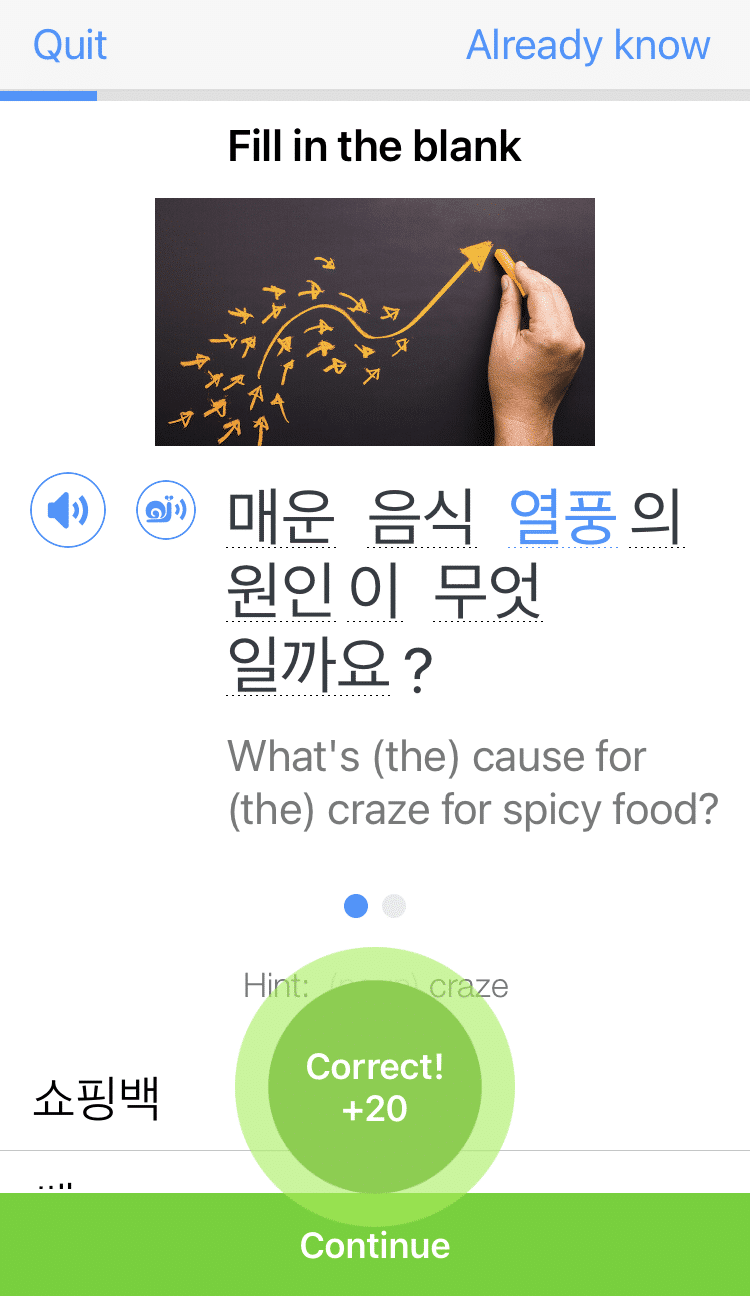Korean Adjectives [Descriptive Verbs]

To really understand Korean adjectives, you’ll need to learn more about Korean verbs:
How Korean Verb Conjugation Works | FluentU Korean Blog
To become a master of Korean verb conjugation, you need to start with the basics! Click here to learn how to conjugate the three main formalities and four Korean verb…
The 300 Most Useful Korean Verbs | FluentU Korean Blog
Do you know your Korean verbs? Which ones are absolutely essential to learn? We have the 300 most useful Korean verbs out there. You’ll learn various action verbs, stative…
That’s because Korean adjectives actually belong to a class of verbs.
They’re also known as “descriptive verbs.”
Here’s your guide to the basics of Korean adjectives.
Download: This blog post is available as a convenient and portable PDF that you can take anywhere. Click here to get a copy. (Download)
Common Korean Adjectives
Shapes and sizes
| 큰 | big | 두꺼운 | thick |
| 작은 | small | 얇은 | thin |
| 긴 | long | 일자형의 | straight |
| 짧은 | short | 둥근 | round |
| 좁은 | narrow | 삼각형의 | triangular |
| 넓은 | wide | 정사각형의 | square |
Colors
| 검정 | black | 보라 | purple |
| 하얀 | white | 갈색 | brown |
| 회색 | gray | 주황 | orange |
| 파랑 | blue | 노랑 | yellow |
| 빨강 | red | 초록 | green |
Tastes
| 쓴 | bitter | 매운 | spicy |
| 짠 | salty | 달콤한 | sweet |
| 신 | sour |
Qualities
| 늙은 | old | 젖은 | wet |
| 새로운 | new | 싼 | cheap |
| 좋은 | good | 비싼 | expensive |
| 나쁜 | bad | 빠른 | fast |
| 깨끗한 | clean | 느린 | slow |
| 더러운 | dirty | 무거운 | heavy |
| 빈 | empty | 가벼운 | light |
| 가득한 | full | 같은 | same |
| 딱딱한 | hard | 다른 | different |
| 부드러운 | soft | 이른 | early |
| 건조한 | dry | 늦은 | late |
Adjectives to describe people
| 예의 바른 | polite | 슬픈 | sad |
| 무례한 | rude | 건강한 | healthy |
| 조용한 | quiet | 멍청한 | stupid |
| 시끄러운 | loud | 똑똑한 | smart |
| 외향적인 | outgoing | 뚱뚱한 | fat |
| 수줍은 | shy | 날씬한 | slim |
| 웃긴 | funny | 미혼인 | single |
| 진지한 | serious | 결혼한 | married |
| 아름다운 | beautiful | 가난한 | poor |
| 못생긴 | ugly | 돈이 많은 | rich |
| 행복한 | happy |
Where to Place Korean Adjectives in Sentences
Korean adjectives can be placed before or after the noun.
But the adjectives look a little different, depending on their placement.
Before the noun
In Korean, you can stick the conjugated forms before the noun.
For conjugated forms like 큰 and 작은, you put them side-by-side right before their noun.
For example, “big ears” would be 큰 immediately before 귀, the Korean word for ears.
큰 귀 — big ears
Similarly, “small face” would be 작은 before 얼굴, the Korean word for face.
작은 얼굴 — small face
After the noun
Korean sentences usually end with a verb, which also means they can technically end in an adjective.
For the adjectives that come after the noun (those at the end of sentences), you can just use the “dictionary form.”
That is the 다 form, the un-conjugated, infinitive state of the adjective.
Here are some examples:
우리 집은 크다 — Our house is big
우리 차는 작다 — Our car is small
In the first sentence, 크다 is used instead of the conjugated 큰.
For the second, notice that 작다 is used instead of the conjugated 작은.
How to Conjugate Korean Adjectives
Remember that Korean verbs in the infinitive or dictionary form end in 다. For example:
크다 — to be big
작다 — to be small
예쁘다 — to be pretty
But this isn’t the form you usually deal with in conversations.
Instead, you’ll be dealing with conjugated adjectives that have gone through some transformation.
Here’s how it works.
Step 1: Drop the 다
The first step to conjugating Korean adjectives is to remove the 다 at the end.
This leaves you with the verb stem.
In the examples above, by removing the 다, you’re left with:
크
작
예쁘
Step 2: Add the appropriate ending
After dropping the 다 to get the stem, you now need to add a suffix ending.
The ending adds another unit of meaning to your verb stem.
For our purposes here, the suffix you use will depend on whether or not the stem ends with a vowel or a consonant.
If the stem ends with a vowel, you add ㄴ.
In the example above, 크 (big) and 예쁘 (pretty) both end with the vowel —.
So:
크 + ㄴ = 큰 , the conjugation for “big” in Korean.
예쁘 + ㄴ = 예쁜, the conjugation for “pretty” in Korean.
You now know that it comes from the dictionary form 크다 .
If the stem ends with a consonant, you add 은.
In the example above, 작 (small) ends with the consonant ㄱ.
So:
작 + 은 = 작은 , the conjugation for “small” in Korean.
Irregular Korean adjectives
Irregular adjectives are the few exceptions to the rule. Here are two of the most common ones:
When the verb stem ends in ㅂ, drop it and add 운.
For example, like the verb 쉽다 , which means “to be easy.”
First, you drop the 다.
쉽다 – 다 = 쉽
Now you have the verb stem. From it, drop the ㅂ.
쉽 – ㅂ = 쉬
Finally, you add the syllable 운.
쉬 + 운 = 쉬운 , which means “easy.”
When the verb stem ends in ㄹ, drop it and add ㄴ.
For example, like the verb 길다 , which is “to be long.”
First, drop the 다.
길다 – 다 = 길
Then, drop the ㄹ.
길 – ㄹ = 기
Finally, add ㄴ.
기 + ㄴ = 긴 , which means “long.”
How to Conjugate Korean Adjectives According to Tense
So far, we’ve only been talking about the present tense conjugation of adjectives.
Since Korean adjectives are technically verbs, they can also be conjugated according to tense.
That’s why we can just put nouns and adjectives/verbs next to each other without any intervening words.
Again, with tense, it’ll involve looking at the last vowel in the stem.
Past Tense
For adjective stems that have the vowels ㅗ and ㅏ, you add -았어요.
For example, the past tense conjugation of 좋다 (good) would be 좋았어요 (was good).
For adjective stems that have the vowels other than ㅗ and ㅏ, you add -었어요.
So for 맛있다 (delicious), you add -었어요 and end up with 맛있었어요 (was delicious).
Future Tense
To conjugate in the future tense, you simply add -ㄹ 거예요 or -을 거예요 to the verb stem.
If the verb stem ends with a vowel, we add -ㄹ 거예요.
So for the stem 예쁘 (pretty), the future tense of this would be 예쁠 거예요 (will be pretty).
If the verb stem ends with a consonant, we add -을 거예요.
So, for the stem 늦 (late), we end up with 늦을 거예요 (will be late.)
And there you have it—the core basics you need to know about using Korean adjectives, plus 70 of them to instantly add more color to your conversations!
Download: This blog post is available as a convenient and portable PDF that you can take anywhere. Click here to get a copy. (Download)
And One More Thing...
If you enjoyed this post, you're already halfway to having the time of your life learning Korean with FluentU!
FluentU makes it possible to learn with K-pop videos, funny commercials, entertaining web series and more. Just a quick look will give you an idea of the variety of FluentU videos on offer:

FluentU really takes the grunt work out of learning languages, leaving you with nothing but engaging, effective and efficient learning. It's already hand-picked the best videos for you (which are organized by level and topic), so all you have to do is simply choose any video that strikes your fancy to get started.
Each word in the interactive captions comes with a definition, audio, image, example sentences and more.

Access a complete interactive transcript of every video under the Dialogue tab, and easily review words and phrases from the video under Vocab.

You can use FluentU’s unique Quiz Mode to learn the vocabulary and phrases from the video through fun questions.

FluentU keeps track of what you're learning, and tells you exactly when it's time for review, giving you a 100% personalized experience.
Review sessions use video context to help embed the words in your memory.
Start using the FluentU website on your computer or tablet or, better yet, download the FluentU app from the iTunes or Google Play store. Click here to take advantage of our current sale! (Expires at the end of this month.)







